Yesterday I wrote a post in which I used 34,000 of our hypothetical avios, 40,000 AA miles, and 60,000 UA Miles for a couple to tavel to Maui and Germany. Because of reader feedback today’s post imagines the same situation but sends us to Asia Instead.
Our Hypothetical Miles from September and December
To Quickly recap: We applied for 4 credit cards in September, and then doubled up on those same 4 applications for the CCC in 2 player mode in December. In doing so our hypothetical balances are now the following:
-106,000 AAdvantage Miles
-112,000 United Miles
-52,000-190,000 Avios
-70,002 US Airways Dividend Miles
Today I’ll cover a trip to Mexico and Asia with these miles–and just for fun I’ll see what else we can do along the way. 😉
Moving Travel Further East
Yesterday’s post assumed travel through Los Angeles. By doing that I was able to take advantage of the stopover on AA Awards and really stretch our miles. Today I’ll move our travel to the other side of the country–and hopefully help some Right Coasters along the way.
DFW, ORD, or JFK–the below works the same from any of these, the difference is that shorter flights from DFW which would require 7,500 Avios per person from instead take 10,000 per person from ORD or JFK. I’ll choose ORD today, and assume we’re starting out from there.
ORD-CUN–Fun in the Sun
– Average High Temperature in February in Chicago: 38 Degrees.
– Average High Temperature in February in Cancun: 82 Degrees.
I don’t live in Chicago–but I’ve been there, and can say that I’m giving it a generous 38 degree average. 38 in Chicago can feel like 10 elsewhere when you factor in the wind. Regardless, we’re getting out of town, escaping to the Gulf Coast of Mexico and the beaches in Cancun. A trip in February will start with a search on…you guessed it, www.alaskaair.com:
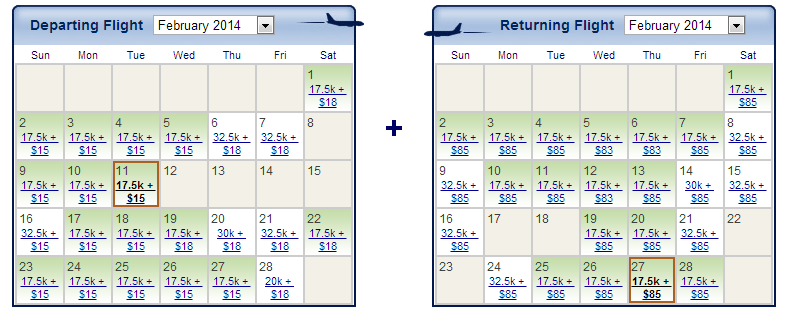
I found the following flights, both low level, and both bookable with Avios on BA.com. The dates are Feb 5, returning Feb 12:
Disregard the 17.5k, this is how many miles it will cost to book this with Alaska Miles. We’re using Avios, so we look at the distance flown, 1449 Miles, and compare it to the Avios chart:
As you can see, for a 1449 mile flight we’ll pay just 10,000 Avios. These types of flights, which span more than one country but are relatively short are usually great uses of Avios. Booking this is straightforward and can be done on Britishairways.com.
Total Miles used: 20,000 Avios
For the Return; AA.com, or Call for More Options
I chose for our trip to Asia to fly to Tokyo NRT. Any number of countries could have been chosen. Both Korea and Japan have AA offpeak awards (coach only). Because of this, and again because our CUN trip started during offpeak times, we’re able to take advantage of this even though we’re flying to Japan during a peak part of the year.
You could instead fly ORD-NRT-ICN and spend the same number of miles. I did not choose ICN for this example because the NRT-ICN flight is not bookable on AA.com, you’d have to call in. To show you pricing and for ease of use I stuck with NRT. The search is straightforward, and mirrors our search from yesterday:
I had no trouble finding plenty of nonstop options ORD-NRT, Sept 8, 9, 10, 11, 12 were all available. As you can see, I settled on Sept 9:
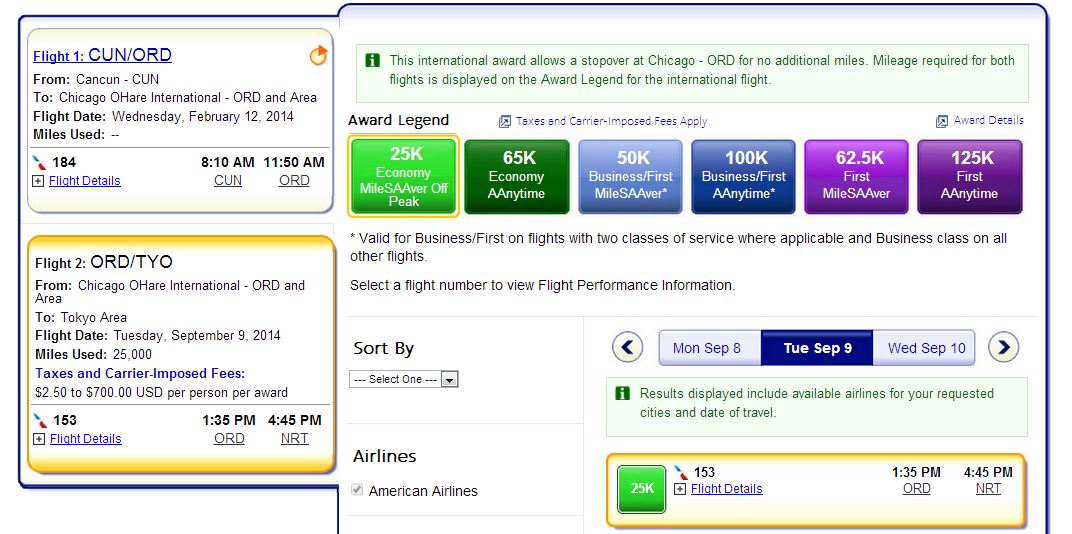
The disclaimer in green lets us know our CUN-ORD flight will price out for free, it states, “This international award allows a stopover at Chicago – ORD for no additional miles. Mileage required for both flights is displayed on the Award Legent for the international flight.”
 All this means is we’re paying 25,000 miles for CUN-ORD stopping there until September and then flying ORD-NRT.
All this means is we’re paying 25,000 miles for CUN-ORD stopping there until September and then flying ORD-NRT.
Note: Because we hold the AAdvantage Credit card we’re technically going to be credited back 10% of these miles used, meaning we’ll end up paying just 45,000 miles for these two flights. I won’t include that in our calculations but wanted to mention it.
Total Miles used: 20,000 Avios and 50,000 AA Miles
Returning Home: AA or US
We could fly from NRT to any number of other countries in Asia, and then travel home from there. Because of the geography of Japan we’re looking at having to use 7,500-10,000 Avios per person to travel to another country as part of this trip. Remember the trick we used yesterday to generate Avios maps:
As you can see we’re into Tier 2 and 3–but plenty of options exist in those tiers. Whichever city you choose in those tiers you’d spend either 7,500 or 10,000 avios to get there. Your return home would be from that city-ORD with United miles. In today’s example I’ve chosen to stay in NRT, and the flight back is simple, and bookable on United.com:

Nonstop flights to ORD, and ANA’s legendary service too. All for just 32,500 miles each.
Total Miles Used: 20,000 Avios, 50,000 AA miles, 65,000 UA Miles.
But We Want to Visit Hawaii Too!
We don’t exactly have enough miles for this, but I thought I’d include it to increase our learning. If we chose to fly NRT-HNL-ORD back with AA miles, we could stop in Hawaii for as long as we’d like, and then go home to ORD. One last weekend on the beach before October and the crisp nights come to Chicago. Booking is easy on AA.com:
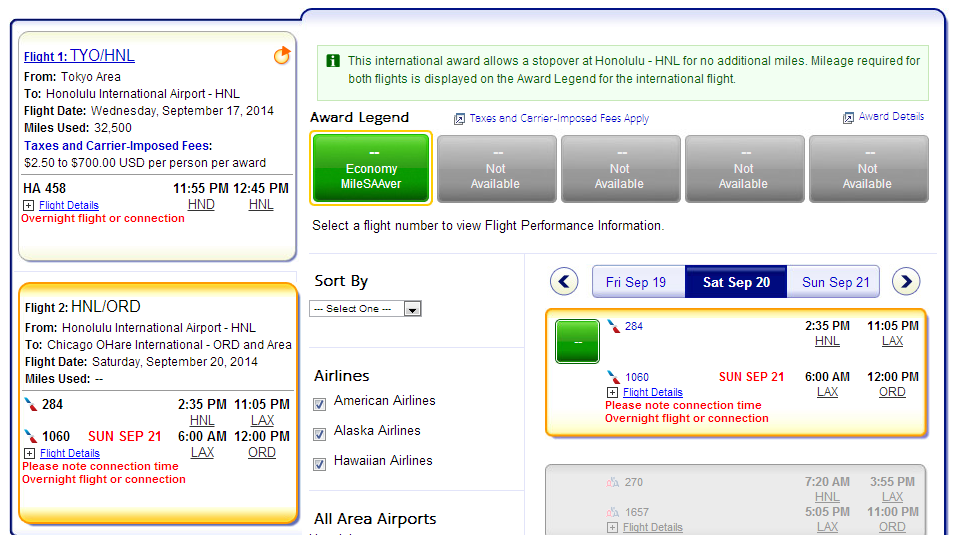
Final routing of this would look like:
Wrap-Up
We almost have enough miles from just 2 sets of applications for both yesterday and today’s trips! That’s a lot of flying off of just 1 set of applications per person, per CCC season. I was really glad to see lots of questions in the comments from yesterday’s post, and if you have similar questions let me know today. As always, planning makes the difference between wasting miles, and money–two of our most precious resources.
Everything below this line is Automatically inserted into this post and is not necessarily endorsed by Milenomics:

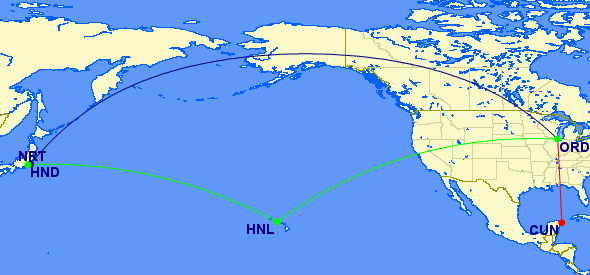

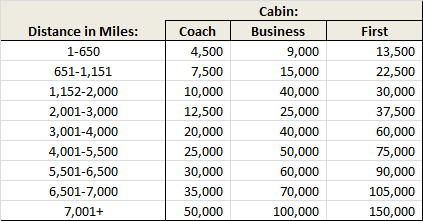




Could you please elaborate on the last section, where you stop in Hawaii? Specifically, what was the process you used to determine that a candidate route existed and who the carriers were? (You introduced HA our of Haneda as an alternative to UA out of NRT without explanation.) My question is more like : “How did you even know to look for that?”
Why does HNL allow you to have a free stopover in this case? Because it is the AA gateway to the US?
Oh, I see that HA is a partner of AA. If HNL is treated as a free stopover because it is entry point, and it’s okay to mix HA and AA, can I take it to the next level: can I mix HA and AS? (Japan–(via HA)–>HNL–(via AS)–>SEA)
I’m thinking of a way to get to Easter Islands without backtracking (via Hawaii, Tahiti, then South America) 🙂
Blue: from NRT you could even fly home to pdx and still stop in HNL on the way home.
Blue: Yes. and Yes 🙂 You put it together before I could come back and comment, but basically the first city you arrive in North America counts as your stopover city. Haneda and Narita are co-terminals, just like LAX, SNA, BUR or EWR, JFK, LGA–you can use them interchangeably, but even that doesn’t matter because you could fly into ICN, then make your way to HND and back home.
The best way to work on this is to study route maps, and make dummy bookings. The more of them you do the better you’ll start to just “see” the solution in your mind.
when using AA mile, do you have to fly AA metal, can you fly on partner airlines for the same result ?
example, I live in LA, would go to CUN oneway with UA miles but come home with AA domestic to LAX, continue some months later on CX to HKG. is it possible with this method ?
Choi: That will work, provided you can find the award space.
Why wouldn’t you just use Avios for the round trip then use the other miles for future trips? You could still tack free oneways on the end of those future trips.
Devon: The round trip is actually more miles if you use Avios. There are many, many different ways to approach this–and these “hypothetical” situations don’t do much but show you little tips, and tricks. Very few (maybe no one) people will live in ORD, and think, “I want to go to Cancun and then Tokyo, and I only have Avios, AA and UA miles.” For these last two posts I’ve limited myself to just the miles we have–and without enough AA miles to book both directions with AA I had to use UA miles.
Makes sense, more about getting us the reader to think creatively and learn techniques. I really appreciate the follow up and it’s working, I’m learning a ton
Just curious, the roundtrip using Avios would be more because you’d push into the tier that charges 12,500 each? But couldn’t you just book each direction as one-ways to lock in 10k each way, saving 5k Avios?
Meredith, the return flight with AA miles takes us from CUN back to ORD, stopping there for months, then to NRT, all for 25,000 AA Miles. Booking avios back to ORD would cost 10k as you mentioned, but then the ORD-NRT flight would cost 32.5k, so all in we’re saving 10k avios and 7.5k AA by doing it this way. If that sounds confusing–it is! This is why booking flights with miles is a seriously complex puzzle.
http://first2board.com/milenomics/3-ways-spending-miles-can-help-long-run/
Ah I was thinking of just one trip. Essentially I think you’re saying to always have the next trip planned so you can see how you can save/mazimize miles?
I’m thinking of a way to think about the AA one-way add-on rule and when it might be applicable. (I’ve never seen anyone actually explicitly state a “programming rule” about using it…)
Here goes:
IF you are flying outside of North America AND
IF your route can use your home airport (or nearby) city as the LAST stop when leaving (OR the FIRST stop when returning),
THEN
you can “add-on” a one-way ticket from this home airport to another North American location (for use at a later time, as one-half of another trip in the future)
If this is correct, then I think I can construct a list of the AA-partnered flights that come into my airport. Do I have it right?
(The problem I have is that there is only ONE AA-partnered flights that uses either PDX or SEA as an international gateway…and it’s to Beijing. Seems like I will be forced to shuttle to SFO. At least, that’s a cheap Avios burn for me.)
Blue: Sounds like a good checklist to use, may I borrow it for a future post? The flipside of this is using it as a stopover to visit another North American City–as we did with HNL on the way back from NRT. So if you’ve always wanted to see NYC stop there coming back and then go home to PDX.
You’ve got the SEA-PEK flight you mentioned, and then options in SFO including excellent CX flights (Choi mentioned these too).
Two posts you should read:
Retrain your brain for Milenomics: http://first2board.com/milenomics/retrain-brain-milenomics/
And Advanced routing techniques: http://first2board.com/milenomics/more-advanced-airline-award-ticket-routing-techniques/
But in reality they’re all important posts 😉 I’ll be toying with some sort of “back to the start” type post series, or something similar, we’ve picked up a lot of readers, so it would be good to re-introduce everyone to Milenomics.
Thanks. I will read your recommended posts again. (It’s easy to forget all this stuff unless you do it day in and day out, like booking awards for people… sigh…)
Yeah, I guess I’m jaded, but I think I’ve hit most of the enroute North American cities I want to hit. HNL and NYC are always worthwhile stops though. Hmmm….maybe there is a gateway out of the Caribbean that would work too….? 🙂
Shoot, the only OneWorld Caribbean gateway I saw (that did not route through London) was Dusseldorf to Curacao. But it was pricing out as two separate tickets if I tried to make it a stopover to the west coast (like what you did with Hawaii in the post). I thought Caribbean and US/Canada/Mexico were all one zone but I guess they are not…
For my situation (Pac NW of U.S.), I’m coming to the conclusion that there is not much value in the “OneWorld one-way add-on”. The idea of flying RT to SFO just to tack on a one-way to somewhere else in NA, added to the “panning headache” of thinking about another (even more future) trip while planning the current trip is probably too much *gaming* for me.
To each his own, but, if I lived in SFO or LA or another AA gateway, this would be worthwhile. For my situation, I am not convinced.
panning–>planning
Blue: There are MPM (Maximum permitted mileage) Issues too, which is likely what you’re seeing with that issue. Best rule of thumb is find the most natural routing, so Carribbean–>Europe from east Coast, or Caribbean–>Asia living west coast. DFW is unique because you’re able to route Hawaii-DFW-South America or Hawaii-DFW-Europe, or Caribean-DFW-Asia. You may be right for your situation it won’t pan out every time, but keep it in mind. These two posts were more to show the utility of miles, and not meant to be a detailed accounting of trip tricks and such. I’m also a bit biased because I live in a gateway (LAX).
Couldn’t this rule apply to other airlines as well? If so it would be great to have more of these checklists as I think they really help establish a way of thinking
on the AA award chart, I cant find Mexico to Asia 2 price in econ and business, could you tell what it cost ? thanks